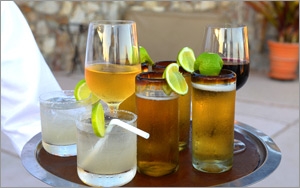Consumers’ approach to drinking alcohol ha ve caused the industry to adapt to changing drinking habits.
ve caused the industry to adapt to changing drinking habits.
They are no longer tied to one specific “go-to” drink and now
make their choice by type of occasion, according to the Beverage Information Group's "Handbook Advance 2015."
The beverage alcohol industry had a year that could best be described as
transformational in 2014. Distilled spirits and wine both saw increases in consumption last year. The beer industry experienced declines, but had pockets of growth, according to the
Norwalk, Conn.-based company.
Distilled spirits achieved its 18th consecutive year of volume growth, ending the year up 1.6%, reaching 213.2 million 9-liter cases. Whiskies continue to
captivate interest, while the vodka and rum categories struggle to achieve growth.
The demand for heritage-filled and authentic experiences has pushed whiskey as the new hip
drink. Handmade boutique and small-batch spirits also contributed to distilled spirits' growth.
The wine industry also fared well while facing its most competitive market in
history. After surpassing France as the world's largest wine market in 2013, the U.S. marked its 21st straight year of growth last year.
This growth has come from newer products
within the wine segments — for example, blended red offerings such as Prosecco and Cava. The wine industry experienced a 0.7% increase and landed at 327.6 million 9-liter cases.
Beer
industry consumption patterns are continually shifting, and it was no different in 2014. Today's consumer is moving away from mainstream brands toward higher end craft and super-premium
offerings.
This growth is coming from smaller brands and has helped stem recent declines. The beer industry ended the year with a slight decrease of 0.5%, ending at 2.832 million
2.25-gallon cases.